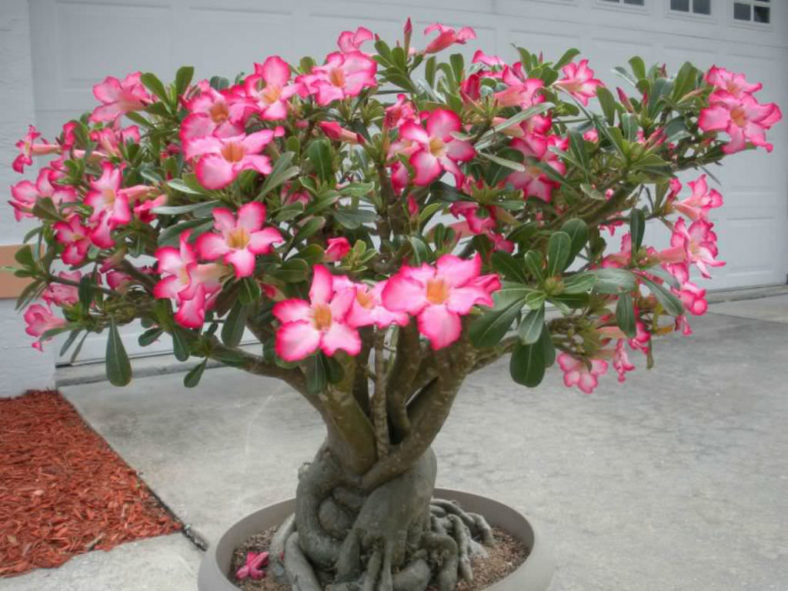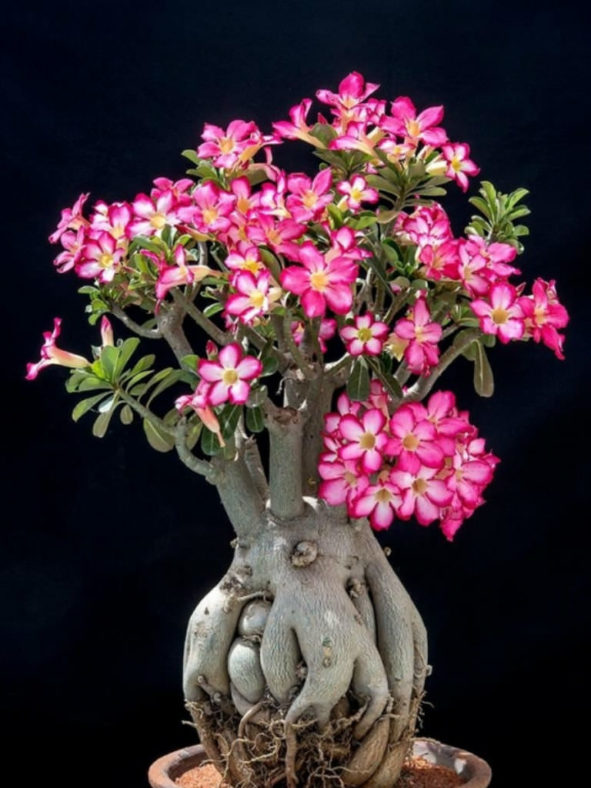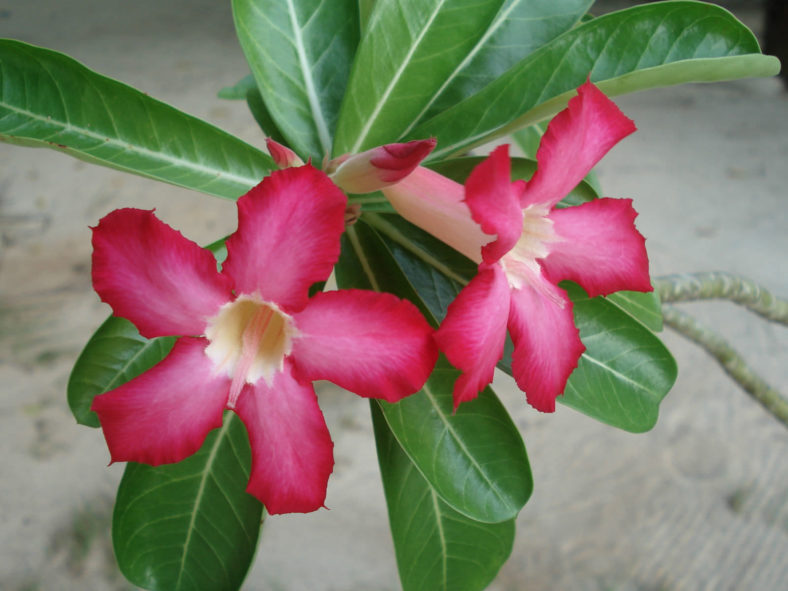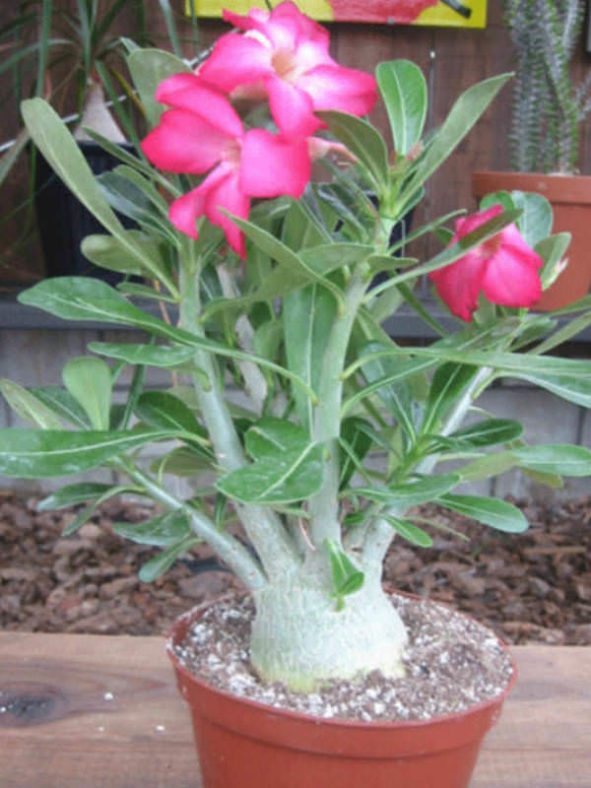Scientific Name
Adenium obesum (Forssk.) Roem. & Schult.
Common Name(s)
Desert Rose, Impala Lily, Mock Azalea
Synonym(s)
Cameraria obesa, Nerium obesum
Scientific Classification
Family: Apocynaceae
Subfamily: Apocynoideae
Tribe: Nerieae
Subtribe: Neriinae
Genus: Adenium
Etymology
The specific epithet "obesum" (pronounced "oh-BEE-sum") means "fat, stout, plump, obese" and refers to the swollen trunk of this species.
Origin
Adenium obesum is native to the Sahel regions, south of the Sahara (from Mauritania and Senegal to Sudan), and tropical and subtropical eastern and southern Africa and Arabia.
Description
Adenium obesum is an evergreen or drought-deciduous succulent shrub or small tree that can grow up to 10 feet (3 m) tall. With age, the stem base becomes up to 3.3 feet (1 m) or more in diameter and sometimes spreads over the rocks in its native habitat. The leaves are spirally arranged and clustered toward the tip of the branches. They are leathery in texture and can measure up to 6 inches (15 cm) long and 3 inches (7.5 cm) wide.
The flowers are tubular, with five red and pink petals, often with a whitish blush outward of the throat. They can reach up to 2 inches (5 cm) in length and 2.4 inches (6 cm) in diameter. The fruits are long, paired, finger-like, and range from grey to pale grey-brown, sometimes fringed with pink.
Subspecies, Varieties, and Forms of Adenium obesum
- Adenium obesum subsp. oleifolium
- Adenium obesum subsp. socotranum
- Adenium obesum subsp. somalense
- Adenium obesum subsp. swazicum
- Adenium somalense var. crispum
- Adenium arabicum

Hardiness
USDA hardiness zones 10a to 11b: from 30°F (-1.1°C) to 50°F (10°C).
How to Grow and Care
These are not difficult plants to grow well, provided they get enough sunlight and warmth. However, like all succulents, they cannot tolerate sitting in water, and if you err, do it on the side of too little water. Use a specialized soil mix designed for cacti and succulents.
Repot as needed, preferably during the warm season. To repot a Desert Rose, ensure the soil is dry before repotting, then gently remove the plant from the pot. Knock away the old soil from the roots, removing any rotted or dead roots. Treat any cuts with a fungicide and antibacterial solution. Next, place the plant in its new pot and backfill with potting soil, spreading the roots out as you repot. Leave the plant dry for a week or so, then water lightly to reduce the risk of root rot.
The Desert Rose is typically propagated by seed. If your plant develops a seed pod, sow the seeds as soon as possible after the pod ripens to maximize the chances of germination. Desert Rose can also be propagated from stem cuttings, but this plant often fails to develop the characteristic (and highly desired) bulbous stem.
Links
- Back to genus Adenium
- Succupedia: Browse succulents by Scientific Name, Common Name, Genus, Family, USDA Hardiness Zone, Origin, or cacti by Genus
Photo Gallery
Click on a photo to see a larger version.


